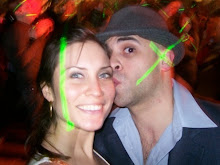Regarding authorial intention, I cannot accept the claim that final intention should be the primary basis of a copy-text. Without delving into Gadamer's hermeneutics or Derridian deconstruction (in doing so I would run the risk of corrupting, rather than corroborating, McGann's arguments), I will attempt to substantiate my view with simplistic historical data. Countless of the world's greatest authors have burned or otherwise destroyed their work, some soon after its composition and others many decades afterwards, towards the end of their life. I have mentioned in class the example of Tasso, who for the last decades of his life disowned the Gerusalemme Liberata-- now, and for the past 4 centuries, unanimously regarded as one the great masterpieces of all time-- and made every effort to halt its circulation and destroy every existing copy of it. There are many more examples, from Boccaccio being dissuaded by Petrarch from distroying all his manuscripts (his shabby house WAS very cold...) to Botticelli burning his paintings in Savonarola's bonfire, to Gogol doing the same with all his opus (we will never know if volume two of The Dead Souls was even greater than the first part, and we only have the first part through the deceit of his friend). All the cases listed above were triggered by the onset of religious conversion/breakthrough, an ardent spiritual fanatism that today's scholars and psychologists link to mental illness. Would advocates of "final intention" say that it doesn't count if the authors discover God or if they're diagnosed with schizophrenia? Does not all art involve a deeply spiritual process? And do not all great artists possess minds that are everything but "normal"? The "New Critics" (I forget which) state that "the work is not the property of the author", and Maurice Blanchot, in The Space of Literature, argues that a poet (quite Orphically...) "loses" the work in the moment he sets it on paper: "from the moment he writes it, it becomes unreadable to him". To conclude, I would like to touch upon an artist that has made the issues we will tackle in this week's class the very center of his own art: the 20th century (meta)sculptor Alberto Giacometti, who operated in Paris from th 30s to the 50s, classified alternatively as existentialist, surrealist, or formalist, but always eluding easy categorization. His elongated, fleshless, and ultra-emaciated figures usually began as more voluminous pieces (often almost realistic), but he picked away at them until they assumed their characteristic aspect. In fact, he would show them at exhibitions, then go back to them and thin them out further. Sometimes, a same piece (but not the same work, right?) would appear in a show 10 years later weighing half the size. However Giacometti, would keep returning even to his most accoladed sculptures, often working until they crumbled to the ground and were swept away by the maid that tended to his studio. "The work," he stated, "is not finished until there it is completely destroyed, until there is absolutely nothing".
http://www.electroasylum.com/giacometti/
http://mediaplayer.archives.tsr.ch/personnalite-giacometti/3.wmv
(a video of the artist talking about his "poetics", in French, with images of his sculptures)
http://www.artchive.com/artchive/G/giacometti.html
(a decent article in English, with links to some images)
Monday, January 28, 2008
Subscribe to:
Post Comments (Atom)

No comments:
Post a Comment